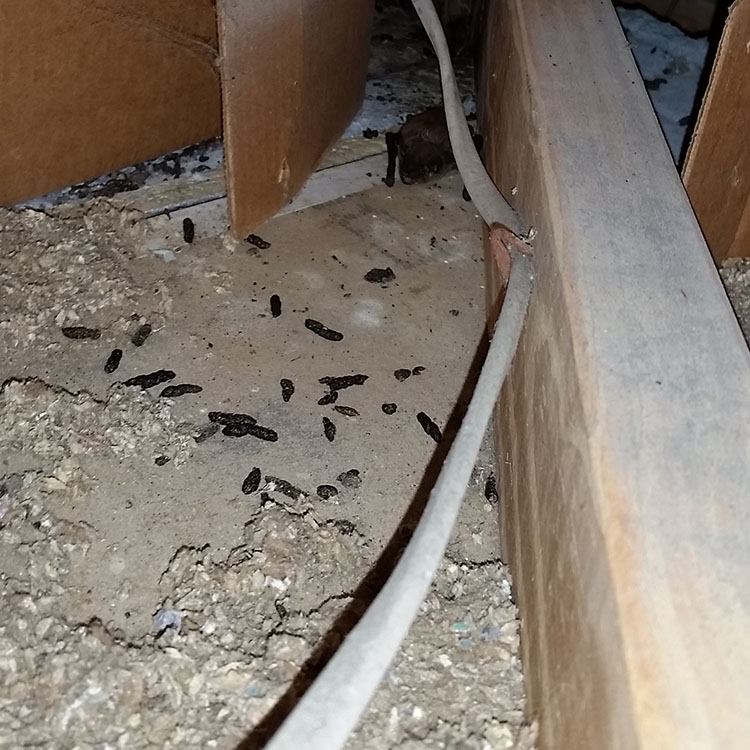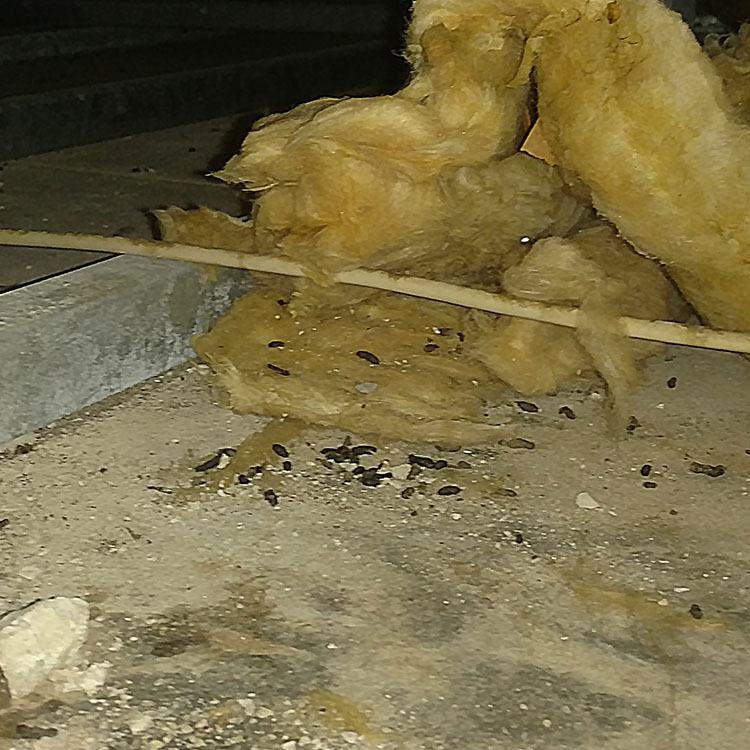What Does Bat Poop Look Like?
While many bats prefer caves, your attic is also not that bad of an option for them. Think about it, it’s a dry, warm, dark place for them to feel safe. It’s even elevated and the risk of predators is significantly lower. While you may be thinking that bats are the terrifying ones, they do have a number of predators. It is common for bats to be killed by snakes, raccoons, and predatory birds. Especially since they sleep all day and can be very vulnerable during this time.

One of the best ways to tell that you have bats in your attic is actually seeing them leave the roost. This happens around sunset, or dusk, when they are starting to get ready to feed. If you have bats in your house, you’ll for sure be able to spot them leaving the roost. You’ll also be able to get a better feel for about how many bats you’re dealing with.
The next best way to tell is by the smell or sight of their droppings – or guano. Bat Guano has a distinctive smell, and once you smell it you’ll just know that that’s what it is. You’ll also never forget the smell, so you could walk into a cave and know that there are bats just by the smell of it. You can typically find guano on a wall or windowsill near the entry point the bats are using.
While not very common, you can occasionally hear the bats as well. They are typically rather quiet creatures, however if they get disturbed by loud noises in the house, you may be able to hear some slight rustling noises. You may also hear these noises when they are leaving or returning to the roost.

Since guano is one of the best ways to tell if you have bats, it is important to know how to identify guano from other animals droppings. Surprisingly, bat guano is commonly used in fertilizer as it has high content of both nitrogen and phosphorus. Guano is typically an pellet shape, much like rodent droppings, but will turn into dust once it is touched. Bat guano is also known for carrying histoplasmosis, a fungus that if inhaled can cause respiratory infections. Which is why if you are going to be getting close to it, you must wear protective gloves and a mask.
If you’ve never smelled bat guano before, it can be hard to explain the very distinctive odor that comes with it. It’s very musty smelling, very overpowering, and with an acidic almost lingering smell. Once you smell it once, you’ll recognize it forever. Most times, bat guano covers large areas, and can get very deep. It is also known for being able to eat away at wood and drywall, and is an excellent source for mold to grow. Guano also attracts cockroaches, and if there’s one thing worse than bats, its bats AND cockroaches.
Often, if you have a roost in your attic, you can also find guano leading into and near the main entry point. It may also be dribbled down your exterior walls. Droppings to this extent are commonly only found in bats, you won’t find droppings down the sides of your walls if you have rodents for example.